Abstract
The response of developing maize (Zea mays L.) endosperm to elevated levels of abscisic acid (ABA) was investigated. Maize kernels and subtending cob sections were excised at 5 days after pollination (DAP) and placed in culture with or without 90 micromolar (±)-ABA in the medium. A decreased number of cells per endosperm was observed at 10 DAP (and later sampling times) in kernels cultured in medium containing ABA from 5 DAP, and in kernels transferred at 8 DAP to medium containing ABA, but not in kernels transferred at 11 DAP to medium containing ABA. The number of starch granules per endosperm was decreased in some treatments, but the reduction, when apparent, was comparable to the decreased number of endosperm cells. The effect on endosperm fresh weight was slight, transient, and appeared to be secondary to the effect on cell number. Mature endosperm dry weight was reduced when kernels were cultured continuously in medium containing ABA. Endosperm (+)-ABA content of kernels cultured in 0, 3, 10, 30, 100, or 300 micromolar (±)-ABA was measured at 10 DAP by indirect ELISA using a monoclonal antibody. Content of (+)-ABA in endosperms correlated negatively (R = −0.92) with endosperm cell number. On the basis of these studies we propose that during early kernel development, elevated levels of ABA decrease the rate of cell division in maize endosperm which, in turn, could limit the storage capacity of the kernel.
Full text
PDF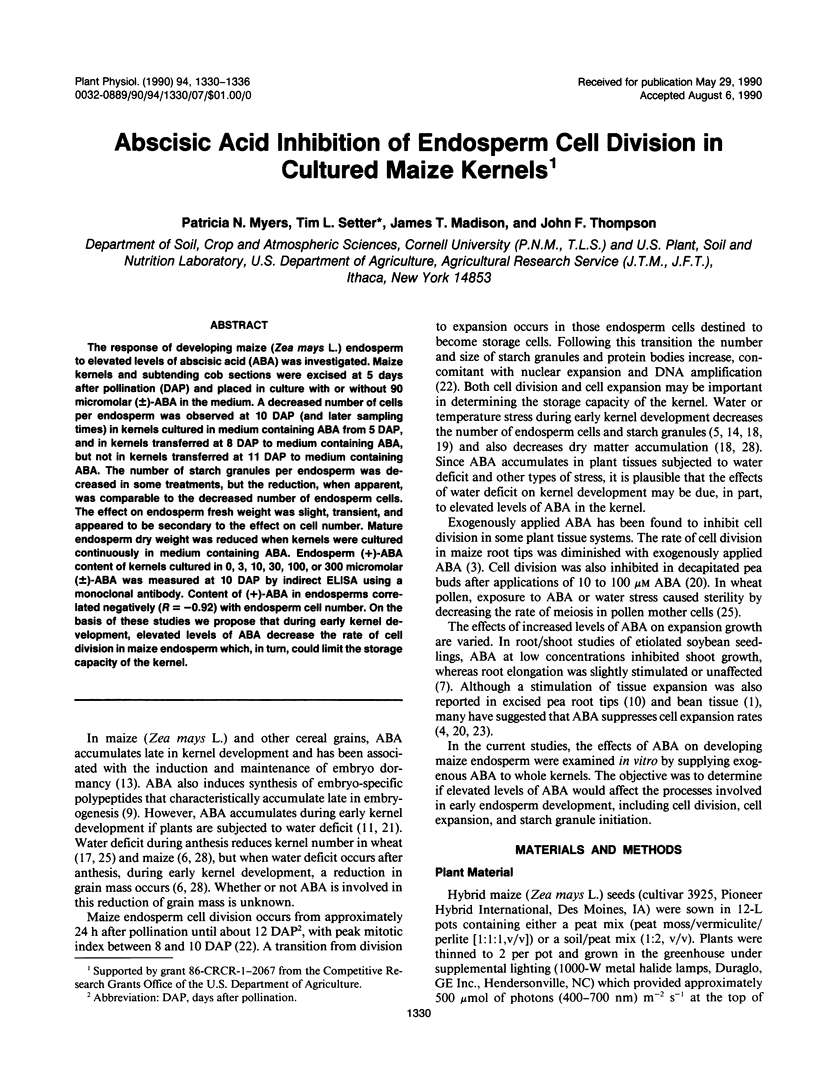
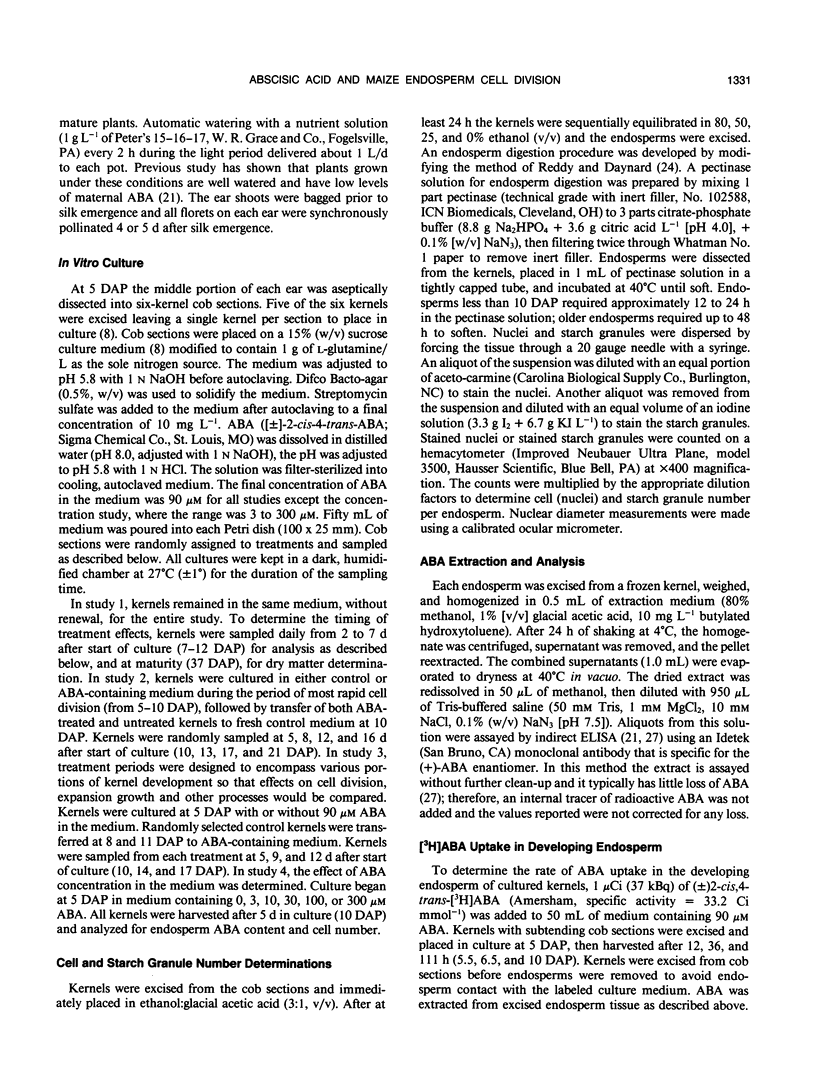
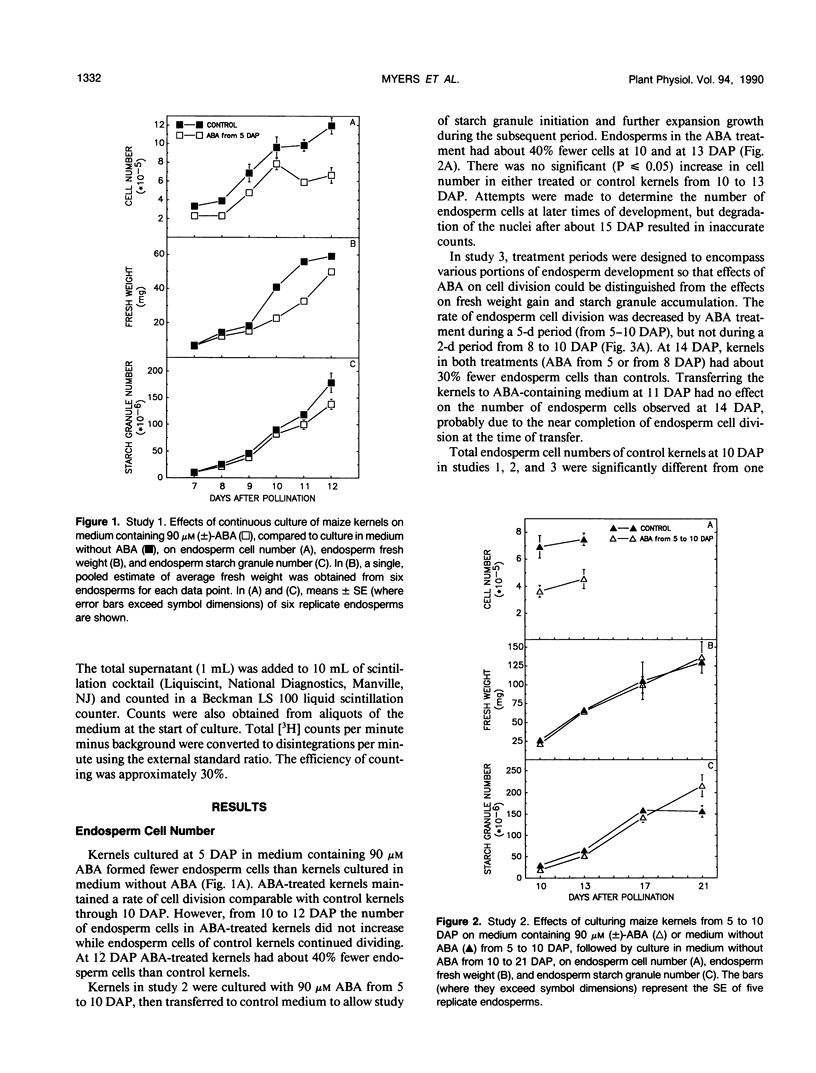
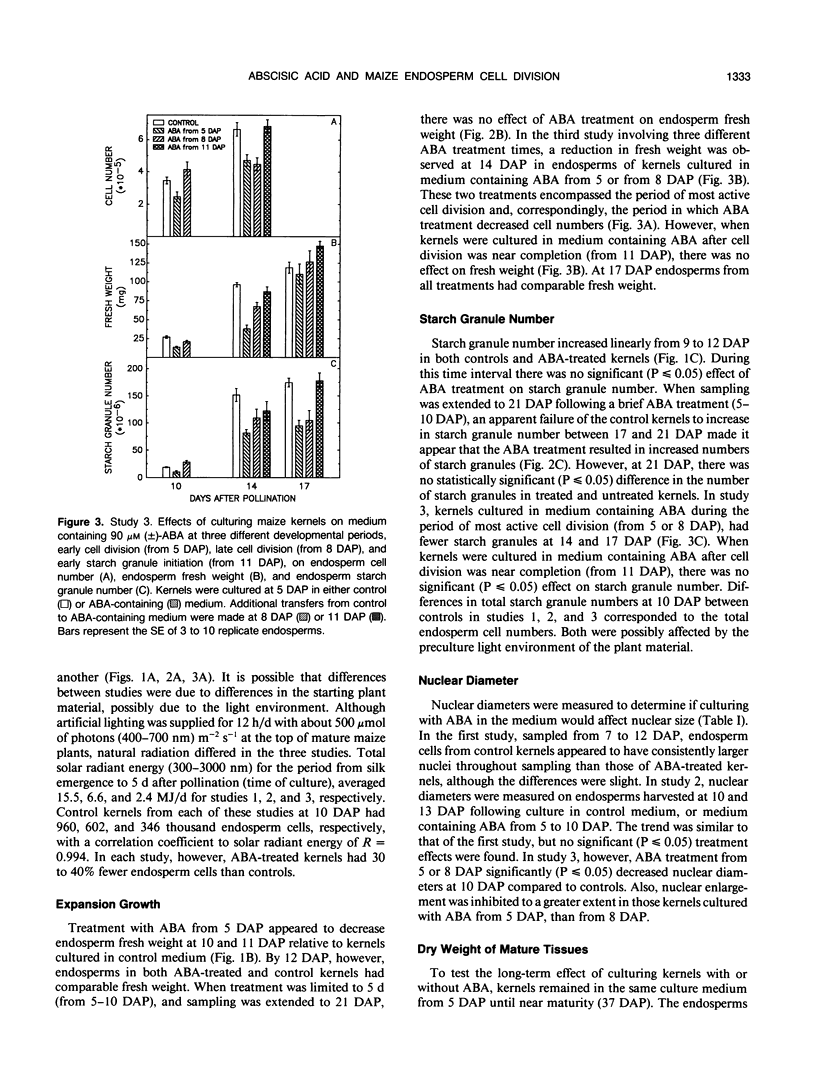
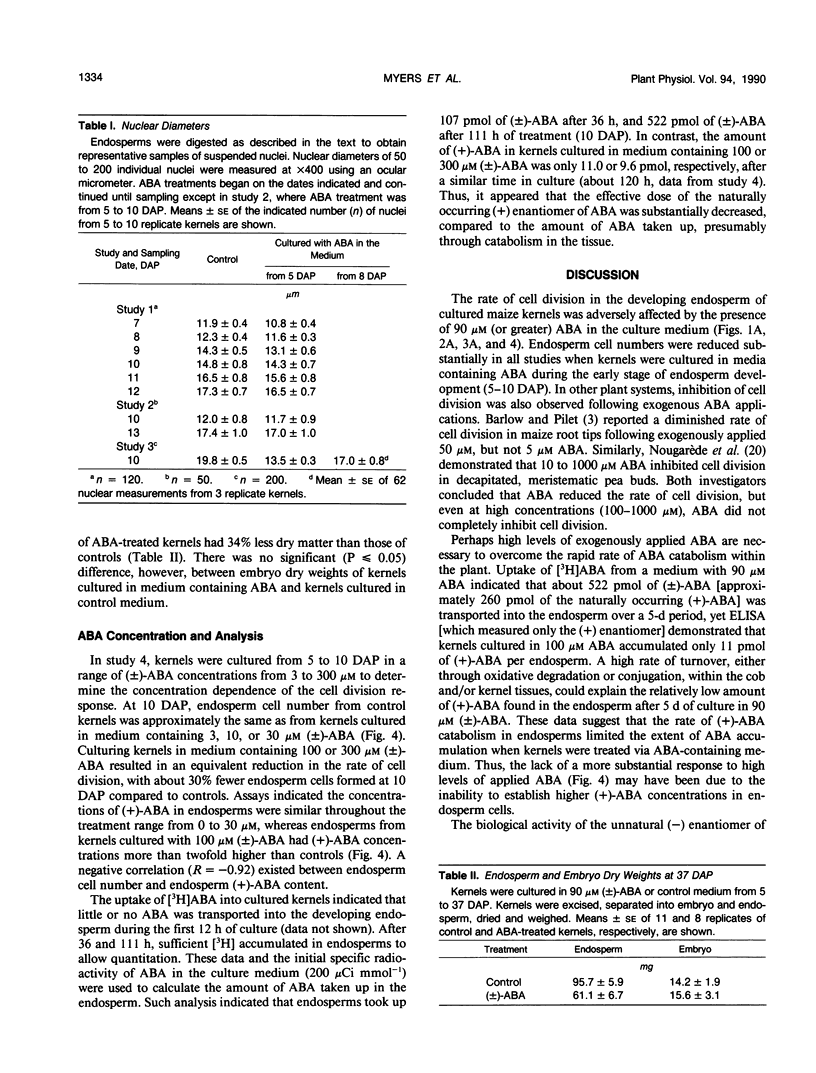
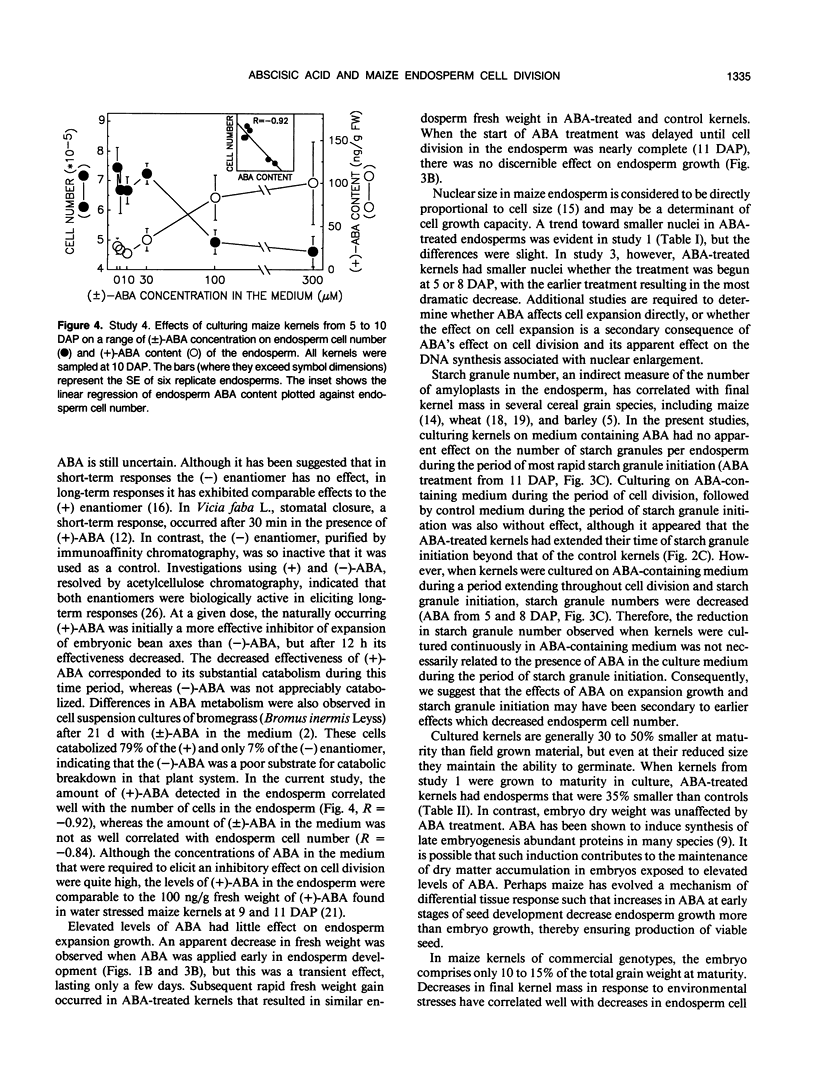
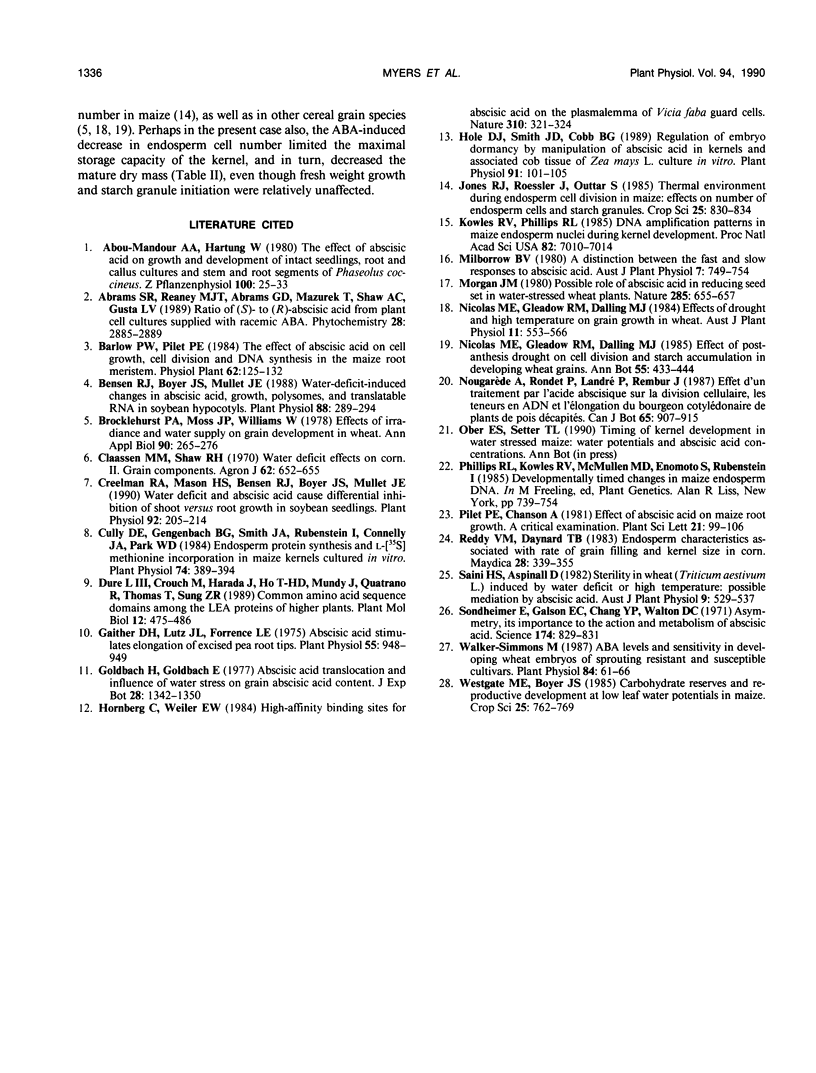
Selected References
These references are in PubMed. This may not be the complete list of references from this article.
- Bensen R. J., Boyer J. S., Mullet J. E. Water deficit-induced changes in abscisic Acid, growth, polysomes, and translatable RNA in soybean hypocotyls. Plant Physiol. 1988 Oct;88(2):289–294. doi: 10.1104/pp.88.2.289. [DOI] [PMC free article] [PubMed] [Google Scholar]
- Creelman R. A., Mason H. S., Bensen R. J., Boyer J. S., Mullet J. E. Water Deficit and Abscisic Acid Cause Differential Inhibition of Shoot versus Root Growth in Soybean Seedlings : Analysis of Growth, Sugar Accumulation, and Gene Expression. Plant Physiol. 1990 Jan;92(1):205–214. doi: 10.1104/pp.92.1.205. [DOI] [PMC free article] [PubMed] [Google Scholar]
- Cully D. E., Gengenbach B. G., Smith J. A., Rubenstein I., Connelly J. A., Park W. D. Endosperm Protein Synthesis and l-[S]Methionine Incorporation in Maize Kernels Cultured In Vitro. Plant Physiol. 1984 Feb;74(2):389–394. doi: 10.1104/pp.74.2.389. [DOI] [PMC free article] [PubMed] [Google Scholar]
- Gaither D. H., Lutz D. H., Forrence L. E. Abscisic Acid stimulates elongation of excised pea root tips. Plant Physiol. 1975 May;55(5):948–949. doi: 10.1104/pp.55.5.948. [DOI] [PMC free article] [PubMed] [Google Scholar]
- Hole D. J., Smith J. D., Cobb B. G. Regulation of Embryo Dormancy by Manipulation of Abscisic Acid in Kernels and Associated Cob Tissue of Zea mays L. Cultured in Vitro. Plant Physiol. 1989 Sep;91(1):101–105. doi: 10.1104/pp.91.1.101. [DOI] [PMC free article] [PubMed] [Google Scholar]
- Hydén H., Lange P. W. Correlation of the S100 brain protein with behavior. Exp Cell Res. 1970 Sep;62(1):125–132. doi: 10.1016/0014-4827(79)90514-7. [DOI] [PubMed] [Google Scholar]
- Kowles R. V., Phillips R. L. DNA amplification patterns in maize endosperm nuclei during kernel development. Proc Natl Acad Sci U S A. 1985 Oct;82(20):7010–7014. doi: 10.1073/pnas.82.20.7010. [DOI] [PMC free article] [PubMed] [Google Scholar]
- Sondheimer E., Galson E. C., Chang Y. P., Walton D. C. Asymmetry, its importance to the action and metabolism of abscisic Acid. Science. 1971 Nov 19;174(4011):829–831. doi: 10.1126/science.174.4011.829. [DOI] [PubMed] [Google Scholar]
- Walker-Simmons M. ABA Levels and Sensitivity in Developing Wheat Embryos of Sprouting Resistant and Susceptible Cultivars. Plant Physiol. 1987 May;84(1):61–66. doi: 10.1104/pp.84.1.61. [DOI] [PMC free article] [PubMed] [Google Scholar]


